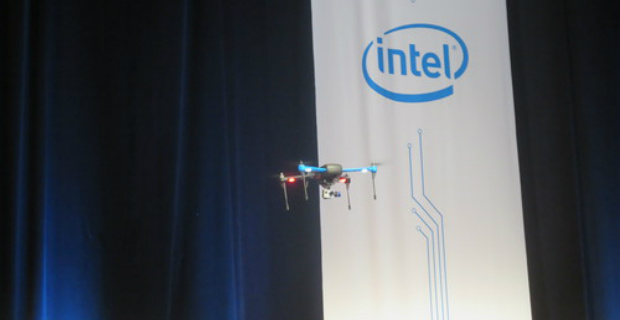Intel is developing a family of sensor chips that the company hopes will ultimately be used in robots, wearables, drones and other electronics.
The chips will be able to grab environmental data, including things like temperature and humidity, as well as audio and visual information, said Mike Bell, the general manager of Intel’s New Devices Group, during a session at the Intel Developer Forum in San Francisco on Tuesday.
Intel didn’t share any details about the chips but the goal is to allow wearables and other mobile devices to gather contextual awareness about their surroundings, which could help with many types of applications.
A lot of the research and development around that effort is focused on collecting sensor data in a power efficient way and enabling compact devices, Bell said.
“We’re also looking at ways for people to harvest energy from their environment,” Bell said.
Intel is looking for new areas to grow, and sensory chips like those used in fitness trackers are a big potential opportunity. The number of wearable devices is expected to touch 320 million by 2018, and Intel wants its chips in more of them.
As with PCs, Intel prefers to partner with makers of wearables than build them itself. For examples, it has provided technology for a heartrate tracking headset by text message Audio and a luxury smart bracelet from Opening Ceremony. Intel is also partnering with watch maker Fossil Group to develop wearables.
Intel’s also tapping into the community of ‘makers’ – enthusiasts developing innovative electronics – to come up with product ideas. For makers to turn concepts into products, Intel started shipping the Edison development board on Tuesday for under $50.
With Edison, Intel is also going after adjacent markets like smart electronics, appliances and Internet of things devices, which includes industrial equipment. The combined number of devices could touch 50 billion by 2020, Bell said.
Bell highlighted many products developed using Edison, which is based on a low-power Quark processor. The board was used to develop a low-cost Braille 3D printer, a smart garment that lights up if a person or object comes too close, and a quadcopter drone that can do visual processing on board to track its subjects when in flight.
Intel has the next version of Edison on the drawing board, Bell said, but didn’t share more information about the product.
Agam Shah, IDG News Service








Subscribers 0
Fans 0
Followers 0
Followers